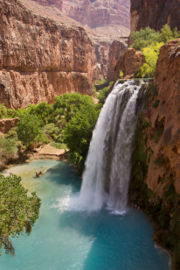Human requirements
| << Page in early stages >> |
|---|
|
ContentsWith world population growing, demand for food (and hence water for farming
 ) expected to grow by 70% [1], rivers becoming polluted and one in eight people already without clean drinking water [2], some have warned that we are heading for a 'peak water' crisis with people lacking the necessary water to survive, and wars breaking out over the access to water supplies [3]. Already, about half of all infectious disease is caused by contaminated drinking water.
A grim picture, indeed. But fortunately, an entirely avoidable one. Water is one of the most abundant resources available to us on this blue planet. The only problem we may face is synthetic scarcity; this article aims to show that there is no real shortage of water, nor of techniques to purify and manage it. If we simply apply the water-management techniques — many of which are extremely simple, low-tech, low-cost things — we have all the water we could ever need. ) expected to grow by 70% [1], rivers becoming polluted and one in eight people already without clean drinking water [2], some have warned that we are heading for a 'peak water' crisis with people lacking the necessary water to survive, and wars breaking out over the access to water supplies [3]. Already, about half of all infectious disease is caused by contaminated drinking water.
A grim picture, indeed. But fortunately, an entirely avoidable one. Water is one of the most abundant resources available to us on this blue planet. The only problem we may face is synthetic scarcity; this article aims to show that there is no real shortage of water, nor of techniques to purify and manage it. If we simply apply the water-management techniques — many of which are extremely simple, low-tech, low-cost things — we have all the water we could ever need.  Building a house can be a lengthy, frustrating, expensive project. It takes around 1000 man-hours of labour to build even a small house, projects nearly never finish on time, and construction uses up massive amounts of energy, water and other resources. Building is also very dangerous, with 500,000 deaths and serious injuries annually as a result of construction accidents in the US alone [4].
The difficulty of building is a major reason that a billion of our fellow humans must live in slums and shanty towns[5], where they have only the flimsiest shelter from the elements, face catastrophic damage if hit by a hurricane, earthquake or other natural disaster and have no sanitary way to deal with sewage and waste, allowing infectious diseases to run rampant. Those of us lucky enough to have houses find they require constant maintenance, are prone to leaking, damp and rot, and need constant inputs of water, food and energy, burdening the owners with housework and with bills. Thankfully, there is no reason to continue in this way. It is now the 21st century and we can safely abandon 19th century building methods for something better. Using currently existing technology, it is possible to build – in just a day or two and with relatively little energy – a house that will stand for centuries without needing repairs, keep itself at a comfortable temperature without an input of energy, and produce its own water, energy and sometimes even its own food with little or no ongoing work. We can re-imagine houses as being more than boxes that we sit in. Rather, a house can be an integrated part of an ecosystem, a life-support system that lives in symbiosis with the human animal by providing him with shelter, water, food, electricity and communication. These sustainable, integrated dwellings will be different depending on local climate, population density and personal taste, but willl have in common a high level of autonomy and effective use of resources. Many people believe that we are soon to face a global food shortage. Population is rising rapidly, with a billion people added in less than ten years. 40% of farming land has been depleted
 and rainforests have been cut down to make more room for farming. Farmers are moving into cities at the rate of over a million a week [6], and our appetite for meat is growing[7]. These trends means that food demand is rising, but there are fewer farmers to supply it, while the basis of our agricultural production is under strain. It would indeed seem that we are heading for a food crisis. and rainforests have been cut down to make more room for farming. Farmers are moving into cities at the rate of over a million a week [6], and our appetite for meat is growing[7]. These trends means that food demand is rising, but there are fewer farmers to supply it, while the basis of our agricultural production is under strain. It would indeed seem that we are heading for a food crisis.
But this story misses a key point: there are far better ways to produce food than the ones now in wide use. While it is true that conventional plough agriculture and monoculture is driving the world towards a food crisis, there are ways to grow food using very little land, very little labour and no pollution. The aim of this page is to explore these methods and show how they can comfortably sustain a growing population. Any food shortage is really a shortage of applying this know-how to food production. It is possible, with current know-how, to create a food-production system that can provide tens of billions of people with abundant, local, nutritious, tasty food, textiles and wood, while economizing water, restoring soil, building communities, saving energy, creating pleasing landscapes, preserving wilderness, stopping diseases, needing virtually no inputs and benefiting not just people, but the rest of the biosphere as well. |
 [print version]
[print version]  [update]
[update]  [site map]
[site map]


